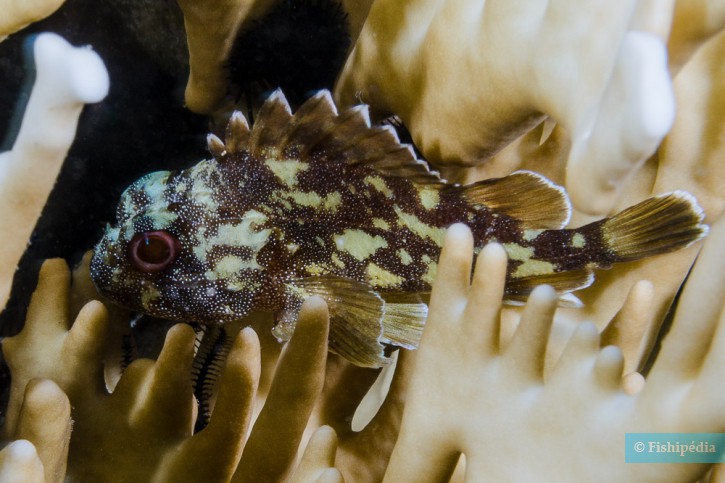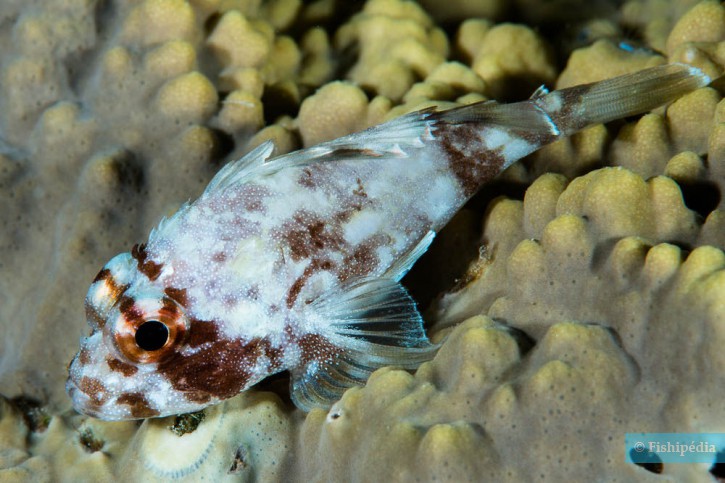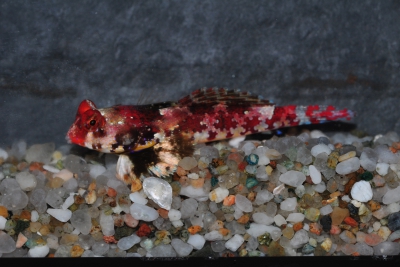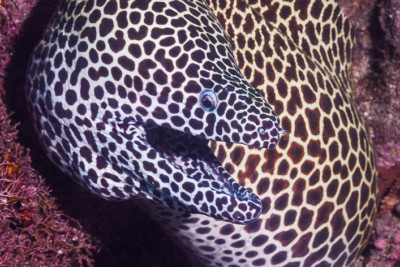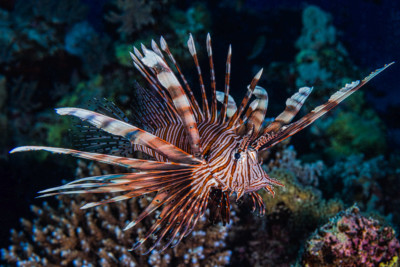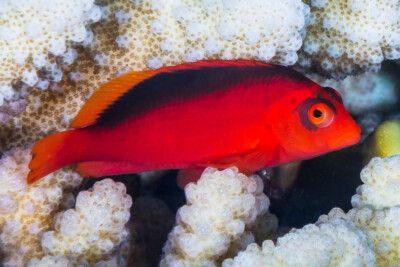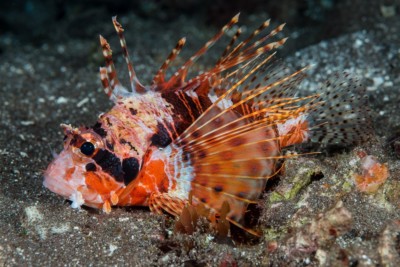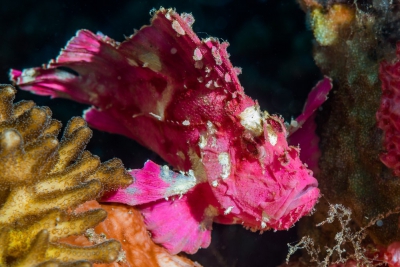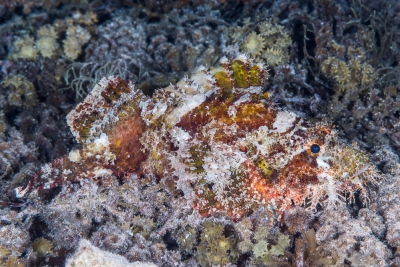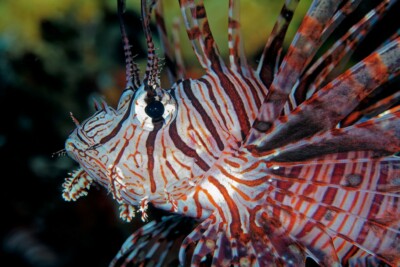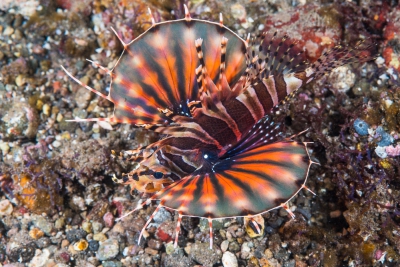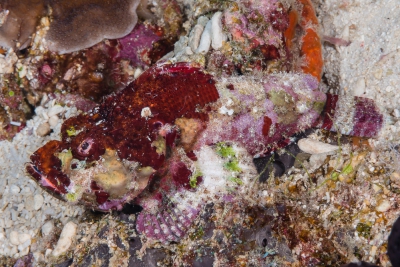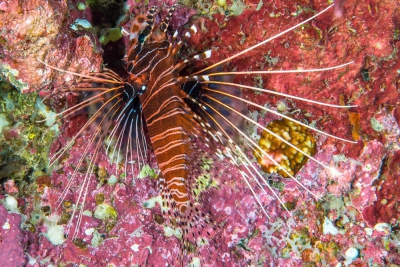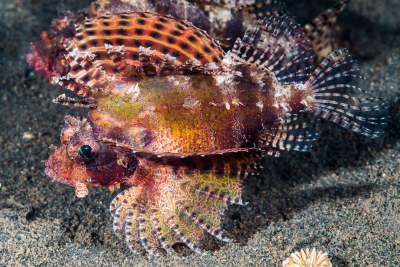yellowspotted scorpionfish
| Scientific name | Sebastapistes cyanostigma |
|---|---|
| Descriptor | Bleeker |
| Year of description | 1856 |
| IUCN category (World) | LC |
| Family | Scorpaenidae |
| Genus | Sebastapistes |
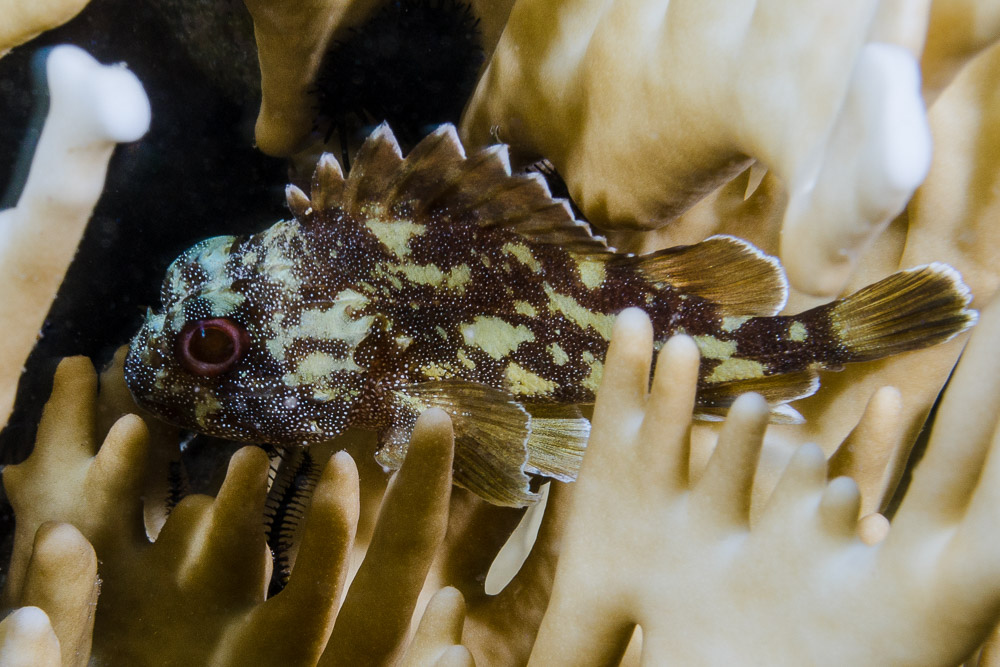

Introduction
The Sebastapistes cyanostigma, commonly known as the yellowspotted scorpionfish, is a small tropical predator closely related to the common scorpionfish found in the Mediterranean. It can be found from the Red Sea to Samoa, mainly in coral-rich areas.
Who is it?
Morphology
-
Type
-
Average size7 cm
-
Maximum size10 cm
-
ShapeUnclassifiable
-
Mimicrystone
-
Patternponctuations
-
Type
-
Average size7 cm
-
Maximum size10 cm
-
ShapeUnclassifiable
-
Mimicrystone
-
Patternponctuations
How to recognize This fish ?
The color of this fish varies depending on the substrate, but it is commonly reddish in tone. It is characterized by white spots and small yellow dots across its body.
Sexual dimorphism
Dimorphism not specified.
Behaviour & Life cycle
-
dietcarnivorous
-
Sociabilityliving in a group or alone
-
territorialNo
-
Way of livingnocturnal
The yellowspotted scorpionfish resides on the seabed, alone or in small groups. It is a species that spends most of its time motionless, camouflaged in corals. It is a carnivorous predator specialized in hunting fish.
Reproduction
-
Reproductionovipare qui pond en eau libre
The yellowspotted scorpionfish is an oviparous fish that lays eggs in open water.
Risks for humans
-
VenomousYes
This species is venomous and can cause serious injuries when touched.
Origin and distribution

Conservation status of populations (IUCN)
What is its habitat?
Natural environment characteristics
-
Temperature22 - 26 °C
-
Depth2 - 30 m
-
FlowMedium, Slow and Stagnant
Biotope presentation
The yellowspotted scorpionfish is most commonly found at depths of less than 30 meters. However, it is not uncommon to find this fish at other depths.
This fish is found in reefs with rich coral growth. It appears to prefer the coral branches of the genus Pocillopora. It has also been observed among the branches of fire corals (Millepora) and Styllophora.
Species of the same biotope
To go further
Sources & Contributions
Participation & Validation
The Fishipedia team and specialist contributors are committed to providing high-quality content. However, although the information comes from scientific sources or testimonials from specialists, the cards may contain inaccuracies.

Benoit Chartrer
Translation
Translation done with the valuable contribution of our translators, who make this information available to a wider audience. We sincerely thank them for their commitment.
Scientific partners
Tags
Species of the same family
Species of the same biotope
